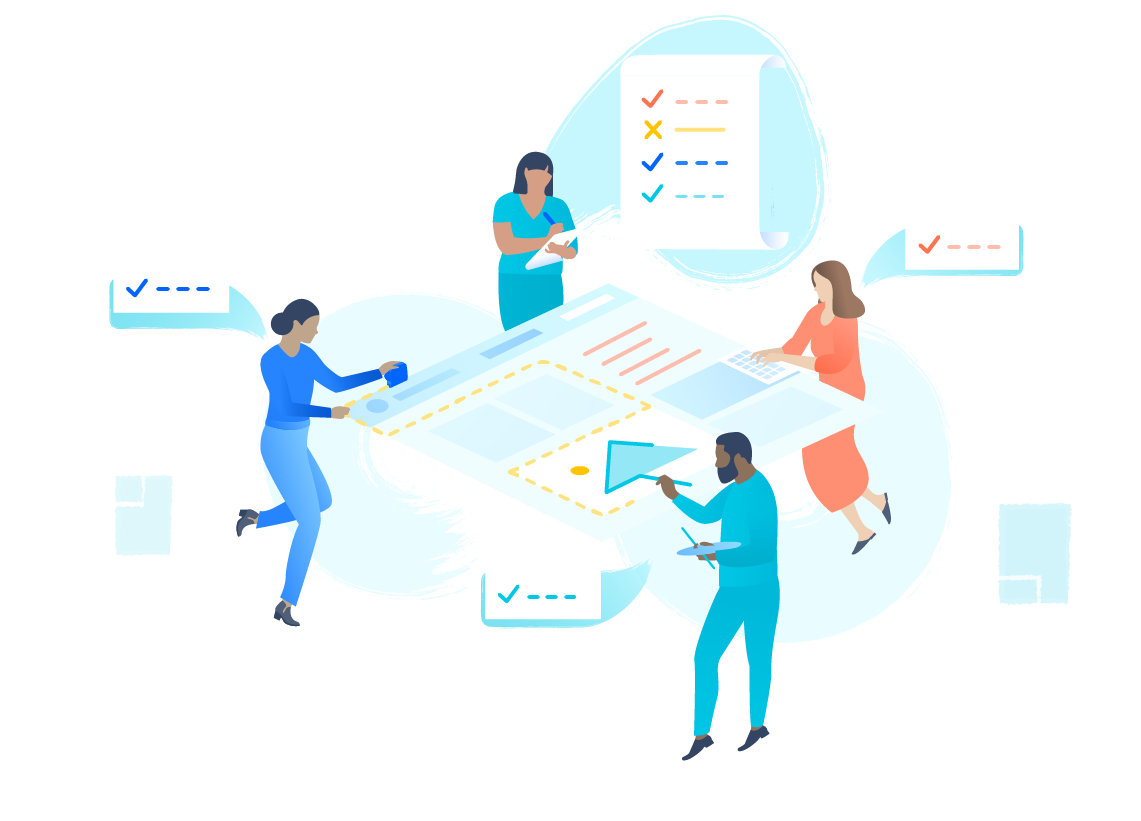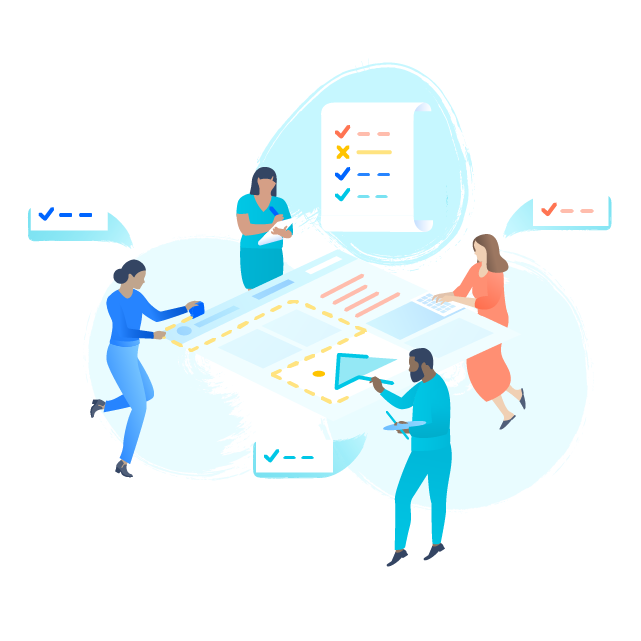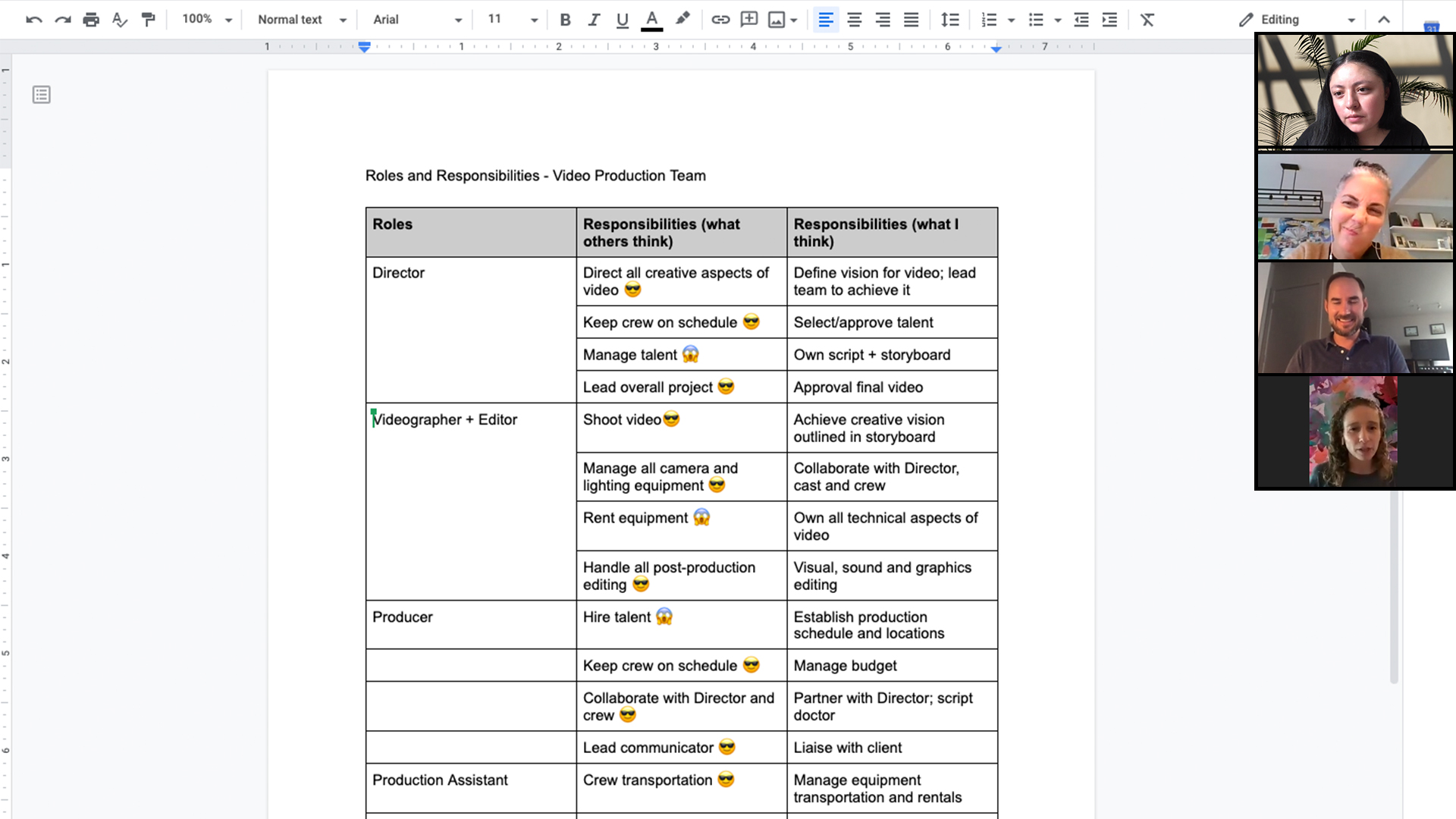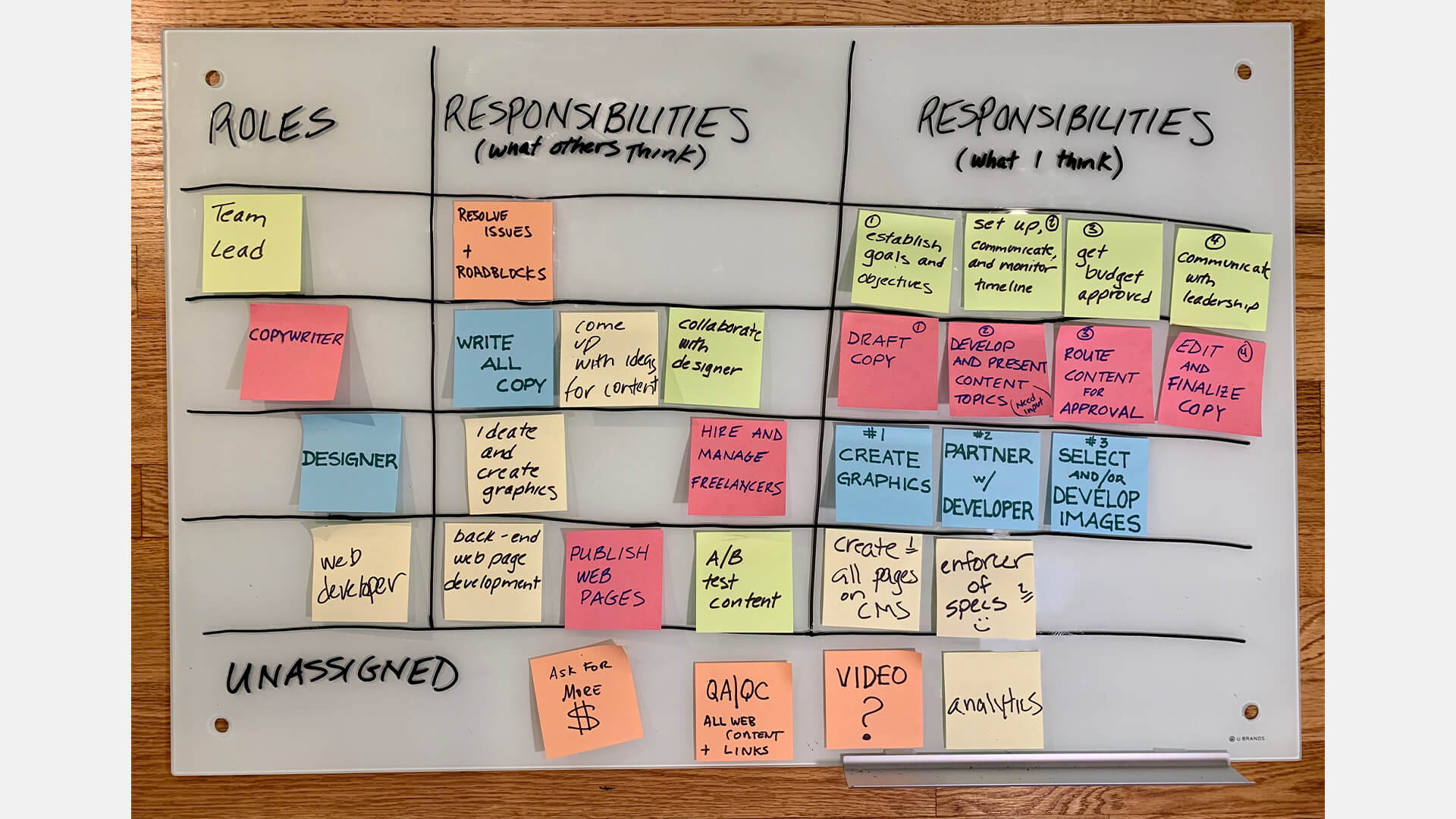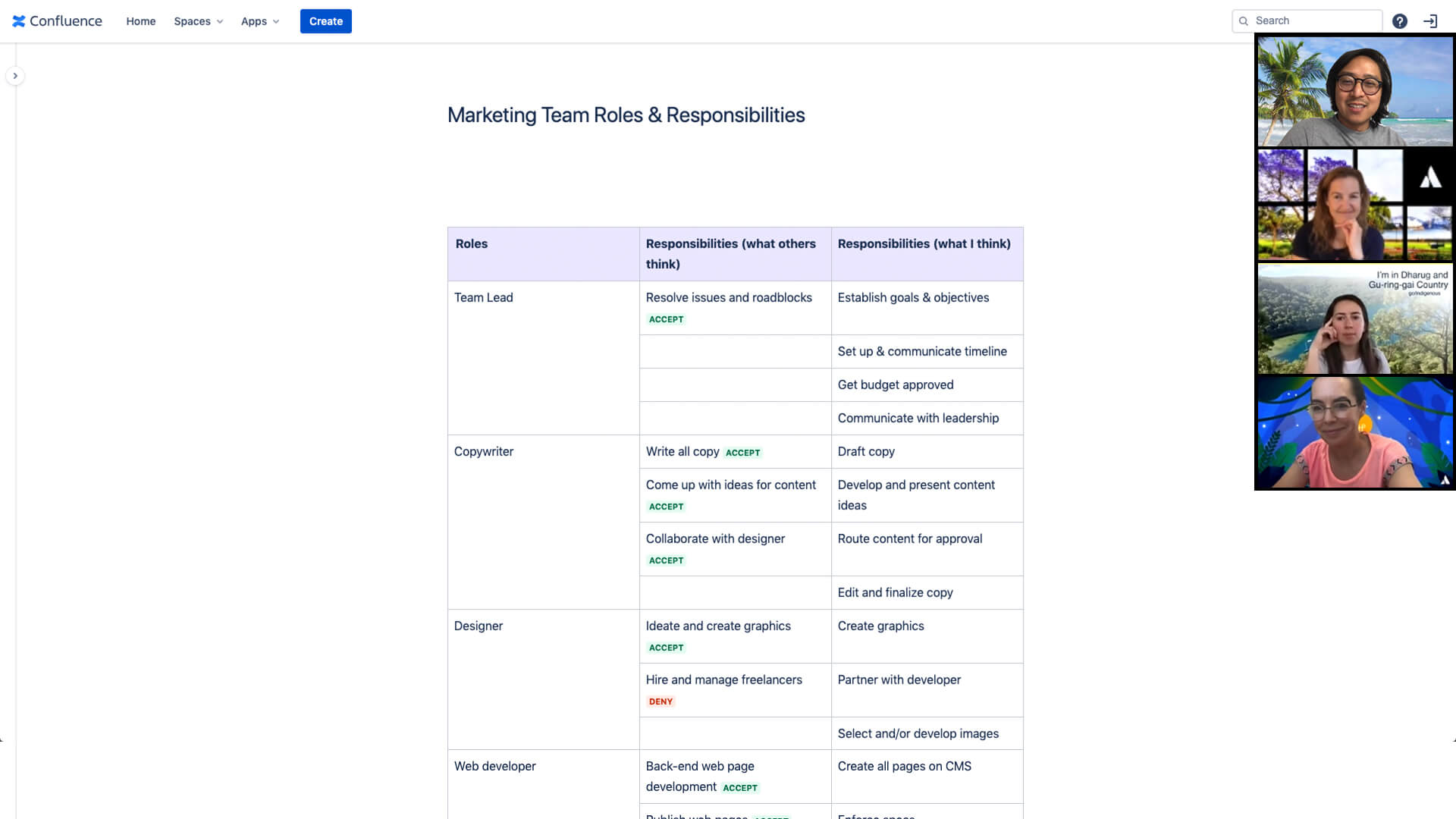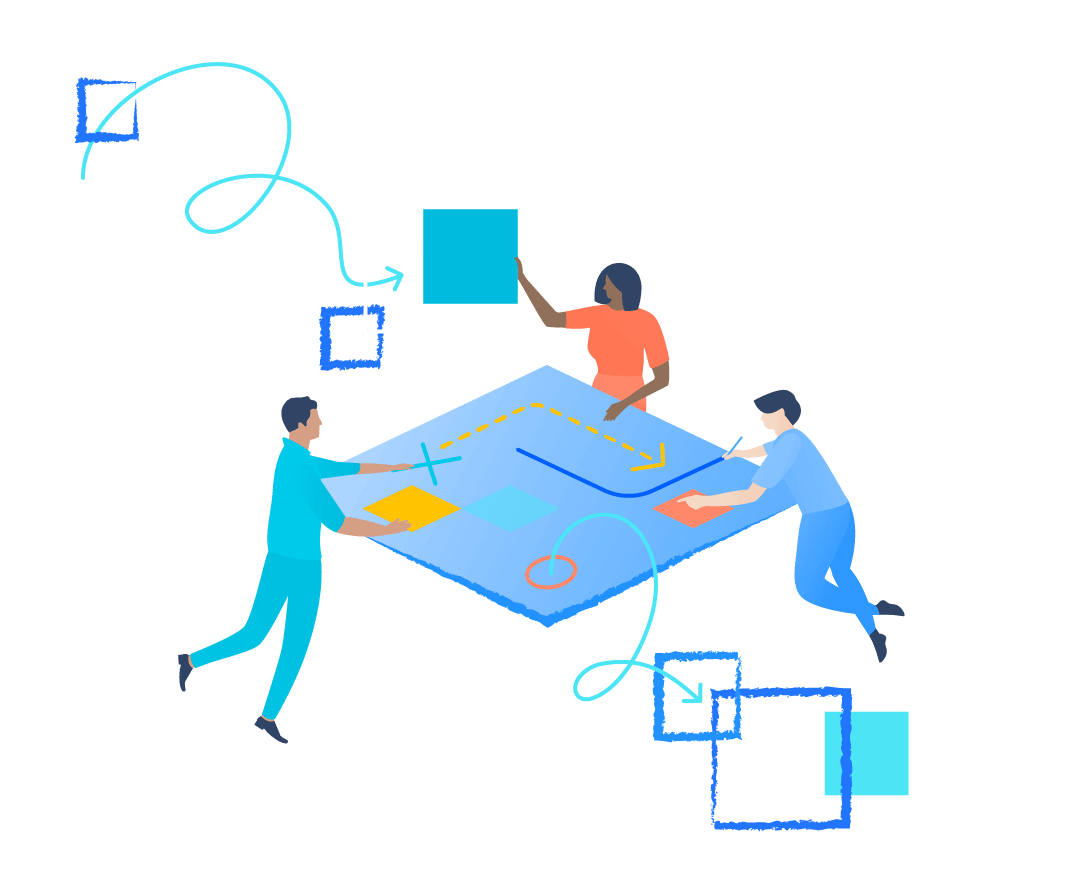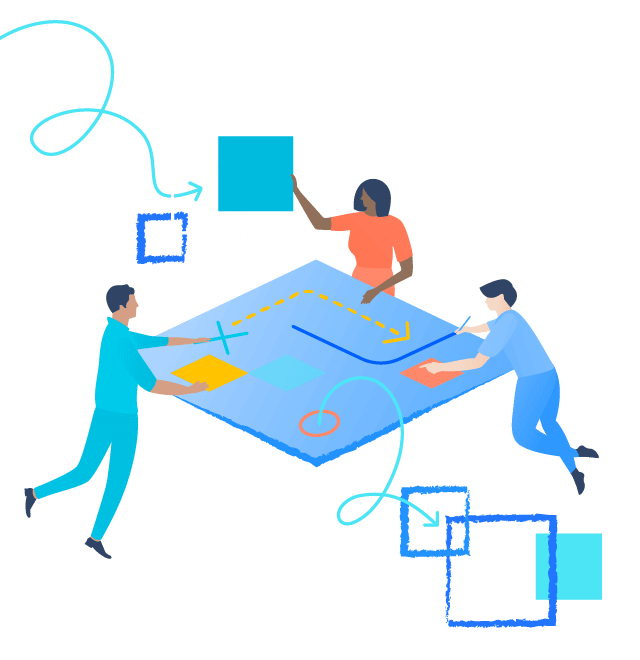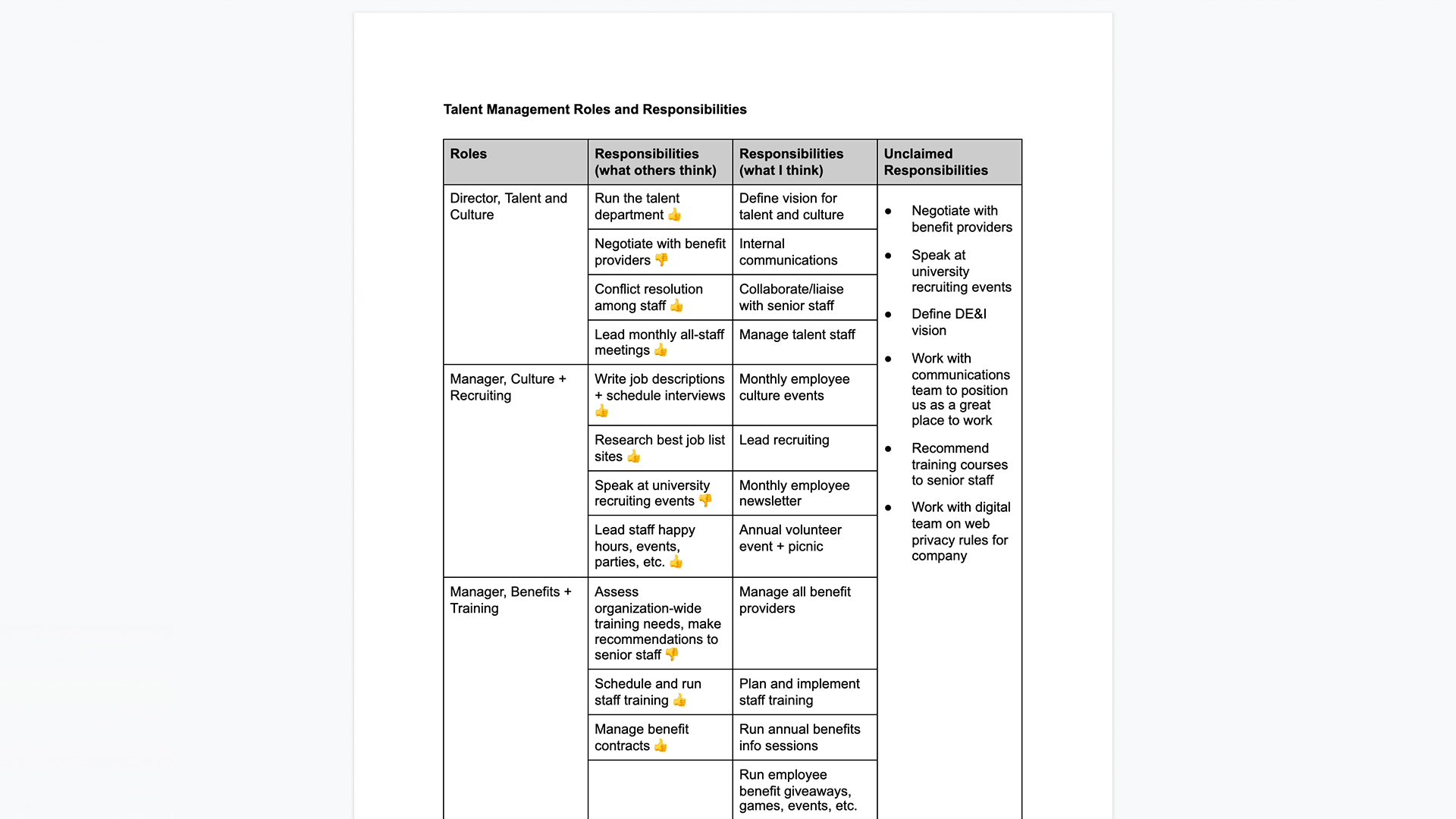Roles and Responsibilities in action
A Roles and Responsibilities session over Zoom, using a Google Doc to capture input.
A team’s whiteboard after completing step 4 of an in-person Roles and Responsibilities session.
This team met over Zoom and used Confluence to capture and summarize their conversation.
What you'll need
Remote
Video conferencing with screen sharing
Digital collaboration tool
In-Person
Whiteboard
Markers
Sticky notes
Timer
Optional templates
Atlassian templates
Instructions for running this Play
1. Prep 15 MIN
Create a shared space, whether online or in a physical space.
If you're running the Play via video conference you can create a table on a Confluence page or in a Google Doc.
Create the following columns:
- Role
- Responsibilities (what others think)
- Responsibilities (what I think)
- Unassigned
Whether you meet in person or remotely, send a message to the team explaining the Play to ensure that everyone understands what work you will be discussing.
TIP: LARGE GROUPS
Have more than 4 people? Set aside 90 minutes for groups of 6-8.
For groups of 9 or more, break the Play into smaller 1-hour sessions.
TIP: TEAM MISSION
At the start of the Play, review the team's mission to set context for what the overall team is responsible for.
2. Identify roles 5 MIN
Define what roles there are in your team (e.g., team lead, developer, designer, accountant) and have everyone add theirs to the "Role" section of the table you prepared.
For any roles that have multiple people on the team in the same role, just add the role once. Some team members may play more than one role i.e. a software engineer who is also a project manager. In this case, add each role to the table.
3. Identify your teammates' responsibilities 15 MIN
For each of the other roles identified, write down your understanding of the role’s top responsibilities in the shared digital document or on sticky notes.
If you think of any responsibilities that don't fall clearly within a role, add them to the section for unassigned responsibilities.
TIP: FOCUS
Keep the session focused on roles, not people.
By focusing on the role, the team can identify gaps in what skills are needed to succeed in that role regardless of the people on the team.
4. Identify your responsibilities 5 MIN
Now ask each person to think of the top (usually 3-5) things they’re responsible for in their role.
Write each responsibility on a sticky note or digital note then rank them in order of importance.
5. Discuss role responsibilities 15 MIN
For each role, the person in the role describes their “What I think” notes. This can include describing how the tasks are prioritized in their role. Each person in the room then presents their ideas in the “What others think” column. The group can discuss differences in ideas and prioritization.
The role owner then reviews the differences and either accepts or declines additional responsibilities. If any responsibilities overlap, define a primary owner, as well as contributors or back-up owners.
Move responsibilities that are not accepted or do not have an owner to the unowned section at the bottom of the table.
TIP: APPROVAL
Depending on your organization, in order to act on the outcomes of the Play, the role owner might need to get their leadership’s approval to finalize their role outlined in this Play.
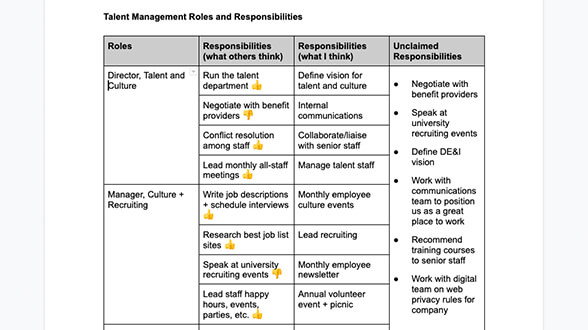
EXAMPLE: UNCLAIMED RESPONSIBILITIES
This team identifies and discusses unclaimed responsibilities and uses a Google doc to capture their input.
6. Review unowned responsibilities 15 MIN
Review the unowned items as a group. See if they are an element of any of the existing roles. Discuss as a group why they might or might not fit in specific roles.
If they are not part of a role, this could mean that a new role is needed or that a role needs to be redefined. Make sure to identify an individual who is responsible for finding an owner of these tasks and a date to follow up.
TIP: HOT POTATO
Watch out for the responsibility that no role wants to accept. If you spot this, call this out so the group can discuss.
7. Summarize and identify next steps 5 MIN
As you wrap up, summarize the roles and responsibilities to confirm that the team agrees.
Identify individual people to own them and then document the specific roles, responsibilities, and deadlines everyone has agreed on.
TIP: AGREE TO DISAGREE
If the team can’t agree on some of the roles or responsibilities, note them as follow-up items to work through in smaller meetings later.
Follow-up
Share out
Share the final document reflecting the outcome of the exercise with the team to see if there are gaps or opportunities.
Share roles and responsibilities document with key stakeholders and leaders. Make sure to tell the team you’ll be doing this.
TIP: REVIEW
Consider reviewing this Play with the team on a three or six month basis or when the team experiences change. It gets easier with practice.
Variations
Cross-functional teams
If you work on a cross-functional team, encourage each role to add some of their responsibilities before the meeting to set a baseline for the kinds of responsibilities they take on. Cross functional groups may have more unowned items so consider adding extra time to assign owners.
Multiple people with same role
If multiple people share the same role, you can encourage them to talk about their responsibilities before the session. They can then share their definition and validate their ideas during the session.
Backups
Some roles may have backups. For example, when the project manager is out the team lead runs weekly meetings. This can be added as a responsibility for the back up role.
From our team, to yours
Stay up-to-date on the latest Plays, tips, and tricks with our monthly newsletter.
